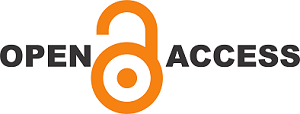CULTURAL SYMBOLS OF DONETSK REGION IN YEVHEN PETRYCHENKO’S CHORAL SYMPHONY-PERFORMANCE «ILLUMINATED BY THE BLACK SUN»
DOI:
https://doi.org/10.31318/2522-4190.2025.143.342813Keywords:
cultural symbols of Donetsk region, works of Yevhen Petrychenko, choral symphony-performance, synthesis of arts, cultural memory, regional identityAbstract
The relevance of the study. One of the prominent figures among Donetsk artists is composer Yevhen Petrychenko, who frequently incorporates various cultural attributes of the region into his work. The use of symbolic elements in the choral symphony-performance «Illuminated by the Black Sun», which highlight the rich historical heritage of the region, challenges the stereotypical perception of Donetsk as merely an industrial area. The work has sparked significant response within the musical community, as evidenced by critical reviews of performances, numerous interviews with the composer and directors, and other discussions. However, analytical studies exploring the embodiment of the composition’s symbolic content are currently lacking.
The main objective of the study is to explore the musical means of embodying the cultural symbolism of the Donetsk region in Yevhen Petrychenko’s choral symphony-performance «Illuminated by the Black Sun». The methodology is based on a culturological approach and includes historical-cultural and structural-analytical research methods.
The main results and conclusions. The cultural symbols of the Donetsk region in Yevhen Petrychenko’s choral symphony-performance «Illuminated by the Black Sun» are more than artistic imagery; they embody the region’s rich cultural heritage and unique identity. This article provides a detailed analysis of all eight parts of the work, exploring how cultural symbols are expressed through musical language, structural elements, and performative techniques. Petrychenko harnesses musical expression to bring the work’s concept to life, integrating traditional and unconventional instruments, vocal exclamations, shouts, whispers, and theatrical choral staging. The piece stands as a significant contribution to contemporary Ukrainian culture, redefining Donbas as a vibrant cultural region and showcasing Petrychenko’s innovative approach to the grand choral cycle. Future research could pursue interdisciplinary approaches, blending musicology, theater studies, semiotics, and cultural analysis to further illuminate the role of cultural symbols in modern musical art
Downloads
References
Anufriyev, О. Svoyeridnist` obrazno-sy`mvolichnoyi poety`ky` ukrayins`koyi narodnoyi kul`tury` [The uniqueness of figurative and symbolic poetics of Ukrainian folk culture]. Available at: https://ird.npu.edu.ua/files/anyfriev.pdf (accessed: 30.03.2025) [in Ukrainian].
Beregova, О. М. (2024). My`stecztvo nezlamny`x: ukrayins`ka kompozy`tors`ka tvorchist` proty` rosijs`koyi agresiyi [The Art of the Invincible: Ukrainian Composers' Creativity Against Russian Aggression]. In: Muzy`koznavcha dumka Dnipropetrovshhy`ny` [Musicological opinion of the Dnipropetrovsk region]. Dnipro, Vol. 24. С. 115-127. DOI: 10.33287/222446 (accessed: 24.03.2025) [in Ukrainian].
Voropaj, О. (1958). Zvy`chayi nashogo narodu. Etnografichny`j nary`s [Customs of our people. Ethnographic essay]. Myunxen, Ukrayins`ke vy`davny`cztvo, 310 р. [in Ukrainian].
Gordiyenko, М. (2021). «Zvuky` Donbasu» – «Osyayani chorny`m soncem» (interv'yu z Yevgenom Petry`chenkom). [“Sounds of Donbas” – “Illuminated by the Black Sun” (interview with Yevhen Petrichenko)]. In: Muzy`ka : Ukrayins`ky`j internet zhurnal [Music: Ukrainian online magazine]. 23 serpnya. Available at: https://mus.art.co.ua/zvuky-donbasu-osiaiani-chornymsontsem/ (accessed: 12.03.2025) [in Ukrainian].
Grinberg, М. (2021). Sy`mvoly` nenavy`sti : dovidny`k [Symbols of hate: a guide]. Ky`yiv, Ukrayins`ka Gel`sins`ka spilka z prav lyudy`ny`, 47 р. Available at: https://www.helsinki.org.ua/wp-content/uploads/2021/02/Prev-HateSymbols_A4 .pdf (accessed: 3.04.2025) [in Ukrainian].
Guzhva, О. P. (2008). Sy`mfonizm yak fenomen duxovnoyi kul`tury` [Symphonism as a phenomenon of spiritual culture]. In: Visny`k Xarkivs`koyi derzhavnoyi akademiyi dy`zajnu i my`stecztv [Bulletin of the Kharkiv State Academy of Design and Arts]. Issue 1, рр. 43–51. Available at: http://nbuv.gov.ua/UJRN/had_ 2008_1_6 (accessed: 14.04.2025) [in Ukrainian].
Zvuky` Donbasu: xorova sy`mfoniya-perfomans [Sounds of Donbass: Choral Symphony Performance]. Available at: https://biggggidea.com/project/zvuki-donbasu-horova-simfoniyaperformens/ (accessed: 14.04.2025) [in Ukrainian]..
Ivchy`k, N. Solyarni sy`mvoly` u my`stecztvi: svasty`ka, sonyachny`j xrest i spirali [Solar symbols in art: the swastika, the solar cross, and spirals]. Available at: https://nataliaivchyk.com/solyarni-symvoly-u-mystetstvi-vid-arhayiky-do-sogodennya/#text (accessed: 22.03.2025) [in Ukrainian]..
Kamenyeva, А. (2017). Muzy`chno-poety`chni sy`mvoly` v xorovij tvorchosti My`xayila Shuxa [Musical and poetic symbols in the choral work of Mikhail Shukh]. In: Problemy` vzayemodiyi my`stecztva, pedagogiky` ta teoriyi i prakty`ky` [Problems of interaction between art, pedagogy, and theory and practice]. Xarkiv, Vol. 47, рр. 82–92 [in Ukrainian].
Кuzyk, V. V. (2021). Kompozy`tors`ki «starty`» Oleksiya Skry`pny`ka, Yevgena Petry`chenka, Diny` Py`sarenko [The composer "starts" of Oleksiy Skrypnyk, Yevhen Petrichenko, and Dina Pysarenkо]. In: Muzy`chna kul`tura Donbasu, Kry`mu: naukovo-populyarni nary`sy` [Musical culture of Donbass, Crimea: popular science essays]. Кyiv, рр. 75–85 [in Ukrainian].
Plaxtiyenko, А. (2021). Ne stadionom yedy`ny`m. Yak muzy`kanty` pereosmy`slyuyut` sy`mvoly` Donbasu [Not just a stadium. How musicians reinterpret the symbols of Donbas]. In: Claquers, 13 veresnya. Available at: https://theclaquers.com/posts/7449 (accessed: 22.02.2025) [in Ukrainian].
Redya, V. Ya. (2024). Muzy`ka v kul`turnij dy`plomatiyi suchasnoyi Ukrayiny` [Music in the cultural diplomacy of modern Ukraine]. In: Ukrayins`ka kul`tura: my`nule, suchasne, shlyaxy` rozvy`tku [Ukrainian culture: past, present, ways of development]: nauk. zbirny`k. Rivne, Vol. 48. рр. 153–160. Available at: https://doi.org/10.35619/ucpmk.v48i.764 (accessed: 22.02.2025) [in Ukrainian].
Rеjns, О. y`mvol «Chorne sonce v konteksti ukrayins`kogo nacionalizmu [The symbol "Black Sun" in the context of Ukrainian nationalism]. Available at: https://cnsl.net/black-sunsymbol/ (accessed: 20.03.2025) [in Ukrainian].
Tyury`kova, О. (2001). Suchasne zhy`ttya fol`klorny`x trady`cij v muzy`chnij kul`turi Donecz`kogo krayu (kul`turologichny`j oglyad) [Modern life of folklore traditions in the musical culture of the Donetsk region (culturological review)]. In: Muzy`chne my`stecztvo Donbasu: vchora, s`ogodni, zavtra [Musical art of Donbass: yesterday, today, tomorrow]: zb. statej. Ky`yiv–Donecz`k, рр. 54–64 [in Ukrainian].
Ushhapivs`ka, О. М. (2011). Kul`turno-my`stecz`ke zhy`ttya Donechchy`ny` (kinecz` XIX –pochatok XXI stolittya) [Cultural and artistic life of the Donetsk region (late 19th-early 21st centuries)]. Кyiv,. 480 р. [in Ukrainian].
Ushhapivs`ka, О. М. (2009). Tvorchist` Ye. Petry`chenka: do problemy` vy`znachennya osnovny`x parametriv sty`lyu kompozy`tora [The work of E. Petrichenko: to the problem of determining the main parameters of the composer's style]. In: Suchasne my`stecztvo [Modern art]: zb. statej. Vol. 6, рр. 349–355. Available at: http://nbuv.gov.ua/UJRN/S_myst_2009_6 _35 (accessed: 22.02.2025) [in Ukrainian].
Tukova, I. (2023). Art music and war: Ukrainian case 2022. In: Musicologica Brunensia. Vol. 58, Іssue 2, рр. 193–204. DOI: https://doi.org/10.5817/MB2023-2-12 [in English].
Downloads
Published
How to Cite
Issue
Section
License
Copyright (c) 2025 Anastasiia Yermolenko

This work is licensed under a Creative Commons Attribution 4.0 International License.
Our journal abides by the CREATIVE COMMONS copyright rights and permissions for open access journals.
Authors, who are published in this journal, agree to the following conditions:
The authors reserve the right to authorship of the work and pass the first publication right of this work to the journal under the terms of a Creative Commons Attribution License, which allows others to freely distribute the published research with the obligatory reference to the authors of the original work and the first publication of the work in this journal.
The authors have the right to conclude separate supplement agreements that relate to non-exclusive work distribution in the form in which it has been published by the journal (for example, to upload the work to the online storage of the journal or publish it as part of a monograph), provided that the reference to the first publication of the work in this journal is included.



